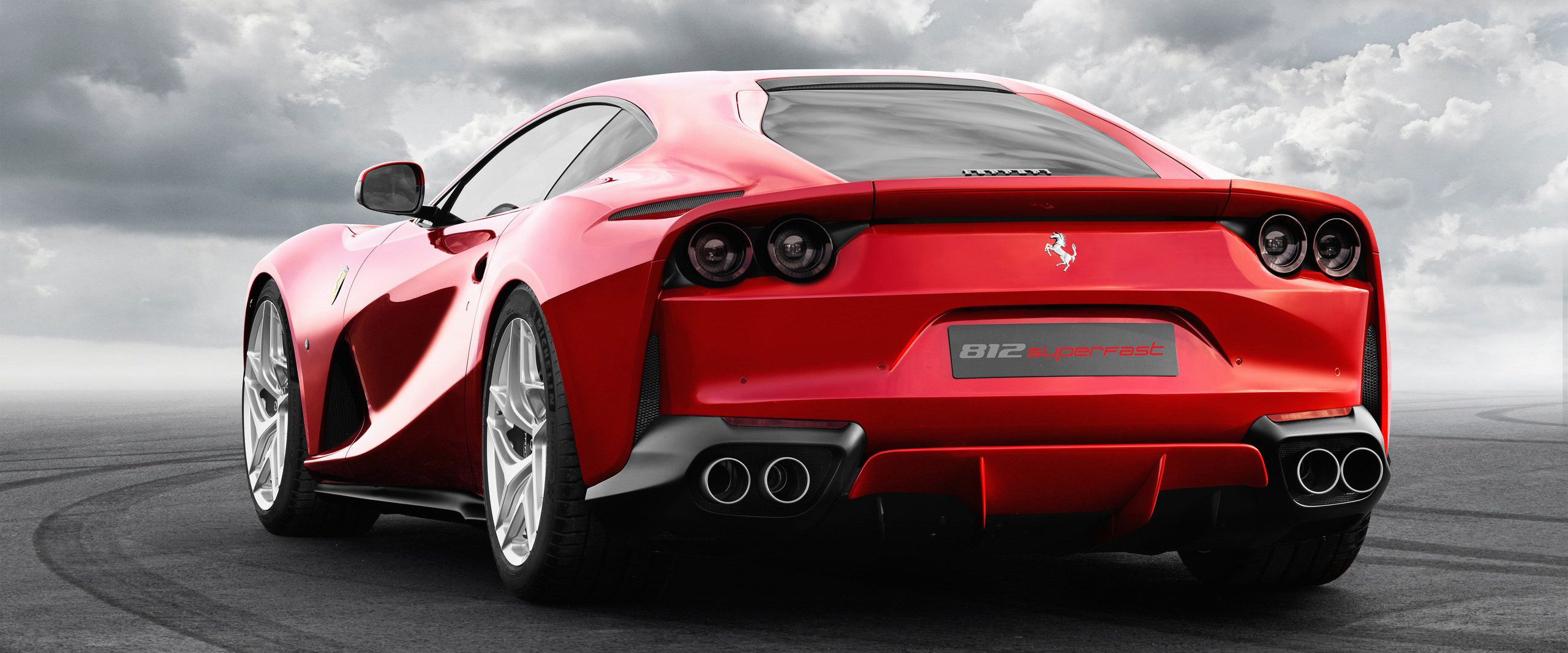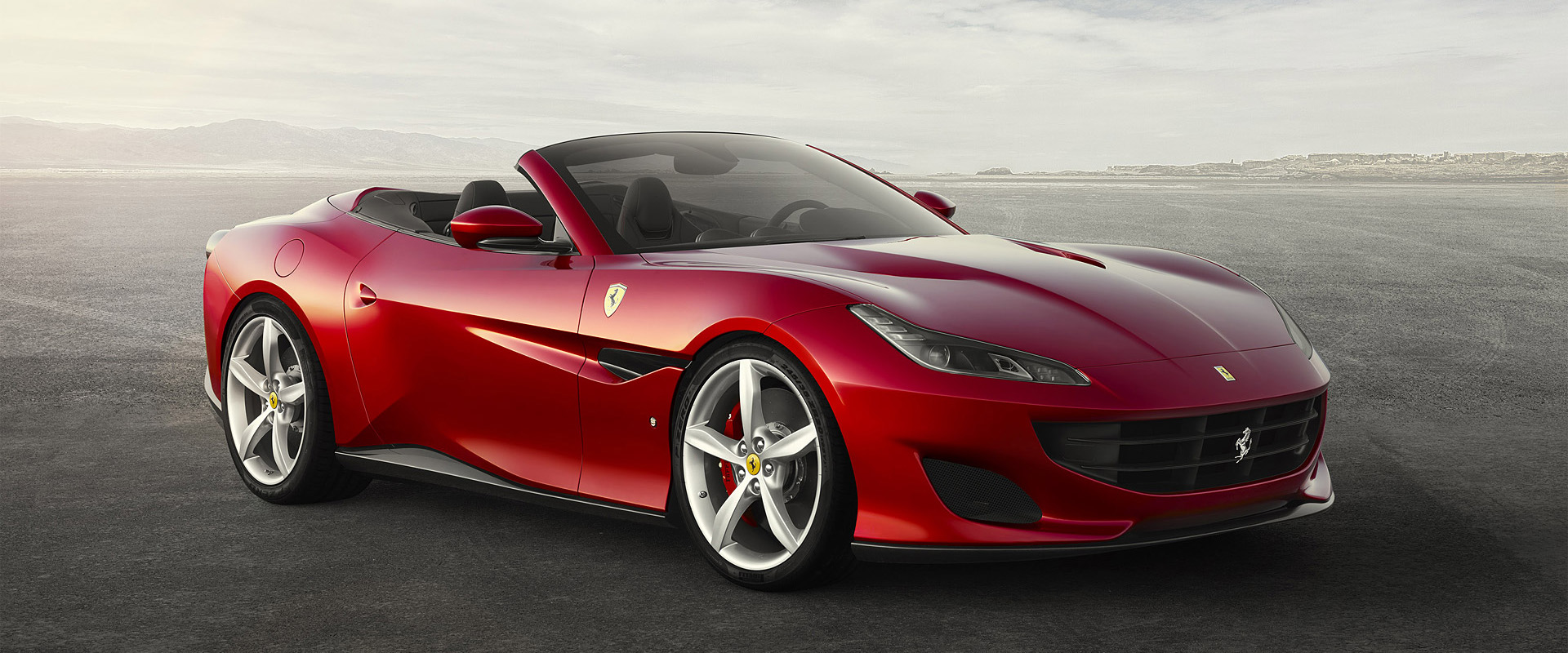
History
Motorsport
Identity
Ferrari N.V. (Italian: [ferˈrari]) is an Italian luxury sports car
manufacturer based in Maranello. Founded by Enzo Ferrari in 1939 out of
Alfa Romeo's race division as Auto Avio Costruzioni, the company built
its first car in 1940. However, the company's inception as an auto
manufacturer is usually recognized in 1947, when the first
Ferrari-badged car was completed.
In 2014, Ferrari was rated the world's most powerful brand by Brand
Finance. In May 2012, the 1962 250 GTO became the most expensive car in
history, selling in a private transaction for US$38.1 million to
American communications magnate Craig McCaw.
Fiat S.p.A. acquired 50% of Ferrari in 1969 and expanded its stake to
90% in 1988. In October 2014 Fiat Chrysler Automobiles N.V. (FCA)
announced its intentions to separate Ferrari S.p.A. from FCA; as of the
announcement FCA owned 90% of Ferrari. The separation began in October
2015 with a restructuring that established Ferrari N.V. (a company
incorporated in the Netherlands) as the new holding company of the
Ferrari group and the subsequent sale by FCA of 10% of the shares in an
IPO and concurrent listing of common shares on the New York Stock
Exchange. Through the remaining steps of the separation, FCA's interest
in Ferrari's business was distributed to shareholders of FCA, with 10%
continuing to be owned by Piero Ferrari. The spin-off was completed on 3
January 2016.
Throughout its history, the company has been noted for its continued
participation in racing, especially in Formula One, where it is the most
successful racing team, holding the most constructors championships (16)
and having produced the highest number of drivers' championship wins
(15). Ferrari road cars are generally seen as a symbol of speed, luxury
and wealth.
Enzo Ferrari was not initially interested in the idea of producing road
cars when he formed Scuderia Ferrari in 1929, with headquarters in
Modena. Scuderia Ferrari (pronounced [skudeˈriːa]) literally means
"Ferrari Stable" and is usually used to mean "Team Ferrari." Ferrari
bought, prepared, and fielded Alfa Romeo racing cars for gentleman
drivers, functioning as the racing division of Alfa Romeo. In 1933, Alfa
Romeo withdrew its in-house racing team and Scuderia Ferrari took over
as its works team: the Scuderia received Alfa's Grand Prix cars of the
latest specifications and fielded many famous drivers such as Tazio
Nuvolari and Achille Varzi. In 1938, Alfa Romeo brought its racing
operation again in-house, forming Alfa Corse in Milano and hired Enzo
Ferrari as manager of the new racing department; therefore the Scuderia
Ferrari was disbanded.
In September 1939, Ferrari left Alfa Romeo under the provision he would
not use the Ferrari name in association with races or racing cars for at
least four years. A few days later he founded Auto Avio Costruzioni,
headquartered in the facilities of the old Scuderia Ferrari. The new
company ostensibly produced machine tools and aircraft accessories. In
1940, Ferrari produced a race car – the Tipo 815, based on a Fiat
platform. It was the first Ferrari car and debuted at the 1940 Mille
Miglia, but due to World War II it saw little competition. In 1943, the
Ferrari factory moved to Maranello, where it has remained ever since.
The factory was bombed by the Allies and subsequently rebuilt including
a works for road car production.
Since the company's beginnings, Ferrari has been involved in motorsport,
competing in a range of categories including Formula One and sports car
racing through its Scuderia Ferrari sporting division as well as
supplying cars and engines to other teams and for one make race
series.
The 1940 AAC 815 was the first racing car to be designed by Enzo
Ferrari, although it was not badged as a Ferrari model.
Scuderia Ferrari has participated in several classes of motorsport,
though it is currently only officially involved in Formula One. It is
the only team to have competed in the Formula One World Championship
continuously since its inception in 1950. José Froilán González gave the
team its first F1 victory at the 1951 British Grand Prix.
Alberto Ascari gave Ferrari its first Drivers Championship a year later.
Ferrari is the oldest team in the championship, and the most successful:
the team holds nearly every Formula One record. As of 2014, the team's
records include 15 World Drivers Championship titles (1952, 1953, 1956,
1958, 1961, 1964, 1975, 1977, 1979, 2000, 2001, 2002, 2003, 2004 and
2007) 16 World Constructors Championship titles (1961, 1964, 1975, 1976,
1977, 1979, 1982, 1983, 1999, 2000, 2001, 2002, 2003, 2004, 2007 and
2008), 221 Grand Prix victories, 6736.27 points, 679 podium finishes,
207 pole positions, and 230 fastest laps in 890 Grands Prix contested.
Of the 19 tracks used in 2014, 8 have lap records set by the F2004, with
a further 3 set by the F2003-GA, F2008 and F10.
The famous symbol of the Ferrari race team is the Cavallino Rampante
("prancing horse") black prancing stallion on a yellow shield, usually
with the letters S F (for Scuderia Ferrari), with three stripes of
green, white and red (the Italian national colors) at the top. The road
cars have a rectangular badge on the hood (see picture at top of page),
and, optionally, the shield-shaped race logo on the sides of both front
wings, close to the door.
On 17 June 1923, Enzo Ferrari won a race at the Savio track in Ravenna
where he met the Countess Paolina, mother of Count Francesco Baracca, an
ace of the Italian air force and national hero of World War I, who used
to paint a horse on the side of his planes. The Countess asked Enzo to
use this horse on his cars, suggesting that it would bring him good
luck. The original "prancing horse" on Baracca's airplane was painted in
red on a white cloud-like shape, but Ferrari chose to have the horse in
black (as it had been painted as a sign of grief on Baracca's squadron
planes after the pilot was killed in action) and he added a canary
yellow background as this is the color of the city of Modena, his
birthplace. The Ferrari horse was, from the very beginning, markedly
different from the Baracca horse in most details, the most noticeable
being the tail that in the original Baracca version was pointing
downward.
Ferrari has used the cavallino rampante on official company stationery
since 1929. Since the Spa 24 Hours of 9 July 1932, the cavallino
rampante has been used on Alfa Romeos raced by Scuderia Ferrari.
The motif of a prancing horse is old, it can be found on ancient coins.
A similar black horse on a yellow shield is the Coat of Arms of the
German city of Stuttgart, home of Mercedes-Benz and the design bureau of
Porsche, both being main competitors of Alfa and Ferrari in the 1930s.
The city's name derives from Stutengarten, an ancient form of the German
word Gestüt, which translates into English as stud farm and into Italian
as scuderia. Porsche also includes the Stuttgart sign in its corporate
logo, centred in the emblem of the state of Württemberg. Stuttgart's
Rössle has both rear legs firmly planted on the soil, like Baracca's
horse, but unlike Ferrari's cavallino.
Fabio Taglioni used the cavallino rampante on his Ducati motorbikes, as
Taglioni was born at Lugo di Romagna like Baracca, and his father too
was a military pilot during WWI (although not part of Baracca's
squadron, as is sometimes mistakenly reported). As Ferrari's fame grew,
Ducati abandoned the horse- perhaps the result of a private agreement
between the two companies.
The cavallino rampante is the visual symbol of Ferrari. Cavallino
Magazine uses the name, but not the logo. Other companies use similar
logos: Avanti, an Austrian company operating over 100 filling stations,
uses a prancing horse logo which is nearly identical to Ferrari's, as
does Iron Horse Bicycles and Norfolk Southern Railway.




 488 GTB
488 GTB
 812 Superfast
812 Superfast
 Portofino
Portofino
 488 Pista Spider
488 Pista Spider
